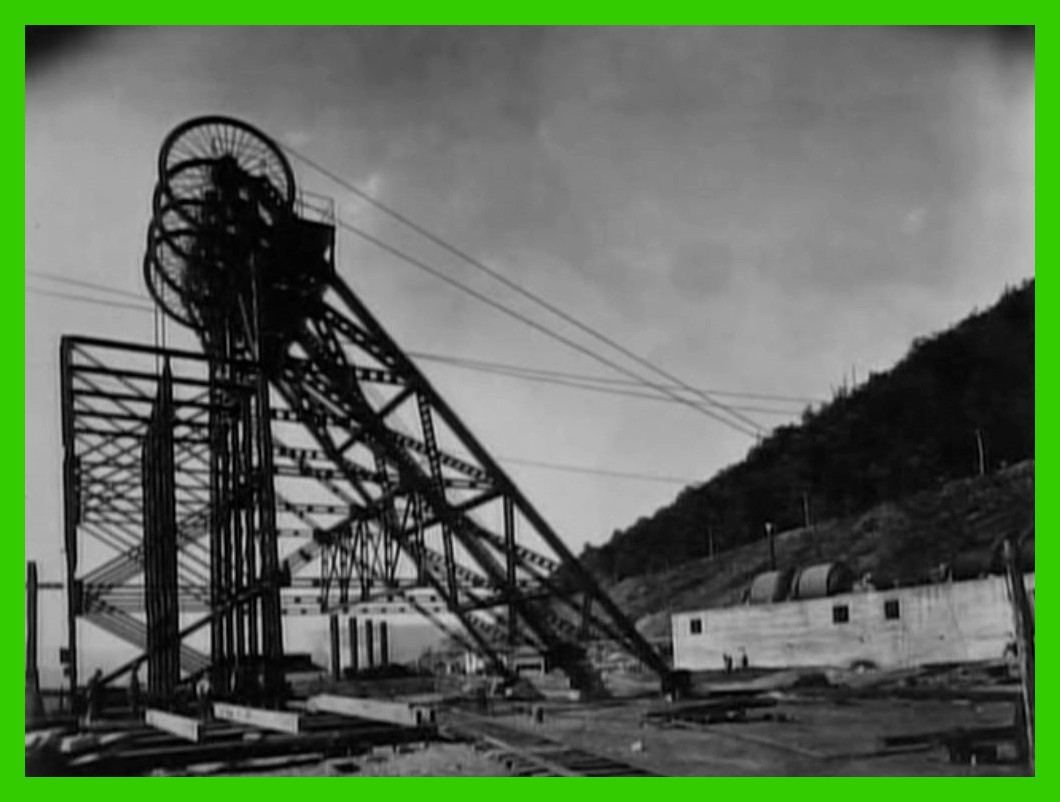
A photograph of the steel structure for the mine shaft of the Lykens Valley Coal Company, Bear Gap, Dauphin County, Pennsylvania, as it appeared on 20 July 1915. The engines which powered the two lifts (elevators) are located atop the structure at the right and the cables appear to be attached at that time to the set of two motors on the far right.
After the mine shaft was dug, the wooden structure was replaced with steel. The shaft went straight down about 1640 and five levels were created, each about 300 feet apart. At each of the first four levels, tunnels were dug into the mountain where the mining took place. The lowest level acted as a sump, from which water was pumped out. The motors which operated the elevators were powered by steam which was generated on site by burning coal, an expensive proposition. The men often rode down into the mining levels with empty coal cars and returned to the surface with full cars of coal, which were then bumped off onto tracks where they awaited to be moved to the breaker. More often than not, one full day’s shift remained in the mine from morning to evening.
In the early 1920s, with the construction of the Lykens Power Plant at the site, the lift motors were converted to electrical power.
This shaft was the last means of mining coal at this site. It remained in operation until the Lykens Valley Coal Company completely shut down their mining operations at the Short Mountain Colliery in the early 1930s.
Corrections and additional information should be added as comments to this post.
______________________________
See also: